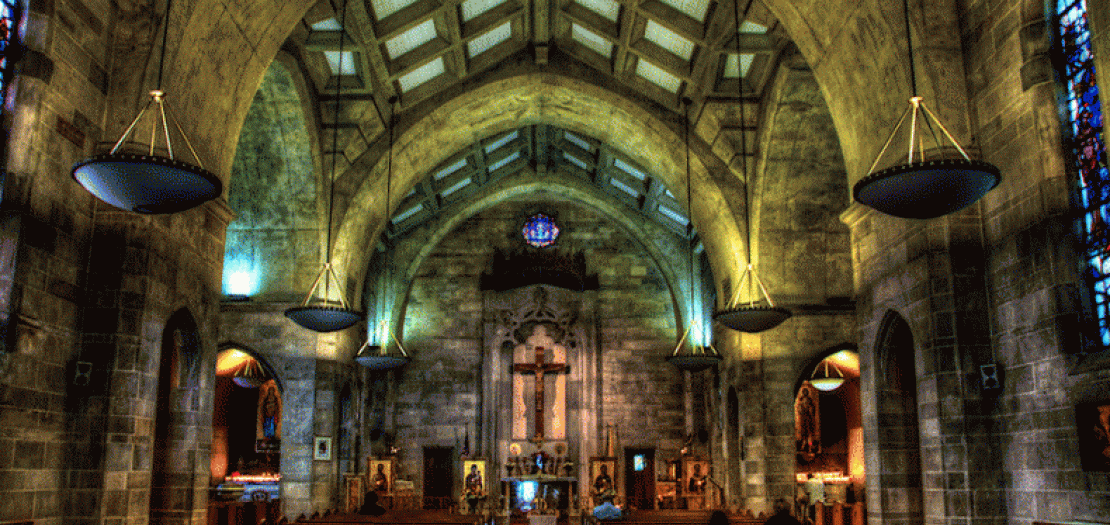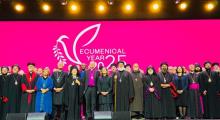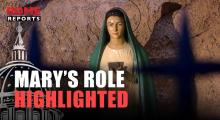Issued by the Catholic Center for Studies and Media - Jordan. Editor-in-chief Fr. Rif'at Bader - موقع أبونا abouna.org

The Greek Melkite Catholic Church, which has been in full communion with Rome since the 18th century, has just elected Archbishop Joseph Absi as its new patriarch. A Byzantine rite church, it has 1.3 to 2 million followers in the world, mainly originating from Syria and the Holy Land.
*****
The Greek Melkite Church was established in 1724 following a schism in the Greek Church of Antioch.
This occurred after one group within the Antioch Church decided to enter into communion with the Holy See after being converted by Jesuit and Franciscan missionaries who were then working in the Middle East.
This group became known as the Greek Melkite Catholic Church and had direct links to Rome. As a result, like other Eastern Catholic Churches, the Melkite Church is also often described as a “uniate” Church.
Although historically the See of Antioch had previously been reserved to a patriarch and bishops who were exclusively Greek, the Greek Melkites immediately chose an Arab patriarch.
The outcome was that two patriarchal lines were established, one Orthodox and the other Catholic.
In 1729, Rome recognized Cyril VI Tanas as Patriarch of the Greek Melkite Catholic Church but the Ottoman empire came to fully recognize this Church during the 19th century.
Faithful to the Council of Chalcedon
The term “Melkite” appeared well before modern times.
Derived from the Syriac word “malka” meaning king or emperor, it designated the Christians belonging to the patriarchates of Jerusalem, Alexandria, and Antioch, who accepted the Council of Chalcedon in 451 and thus remained faithful to the emperor of Constantinople.
These Christians accepted that Christ’s nature was both human and divine, whereas the monophysites believed that he was purely divine.
“There are only four monophysite churches left now,” says Fr. Rafiq, spokesperson for the Episcopal Conference of Egypt. “They are the Coptic Orthodox, Syriac Orthodox, Armenian Orthodox and Ethiopian Churches.”
“All the other churches are actually Melkite! But the Greek-Catholics are the only ones who have taken up the name for their church,” he explains.
From the Middle East to the diaspora
There are between 1.3 and 2 million followers of the Melkite Church in the world, a small fraction of the Greek Orthodox population of 14 million.
Around half of these Melkites live in the Middle East, mainly in Syria, Lebanon, and the Holy Land.
The diaspora is spread across North America (The United States and Canada), Latin America (Brazil, Venezuela, Argentina) and Australia.
“The Melkites of the diaspora originate from the Middle East. However, more and more of them are born in migrant countries,” explains Fr Greiche.
“American Bishop Nicholas Samra, for example, was born in New Jersey. There are also Canadian Melkites who have not been to the Middle East for 70 years."
The Greek Catholic Church owes its demographic dynamism to the fact that, unlike the Copts in Egypt or the Maronites in Lebanon, it is not a national church.
As a universal church, it uses several languages in its Byzantine rite liturgy, namely Arabic and Greek, as well as French or even English depending on the country.
A single patriarch
There is only one Melkite Catholic patriarch, whose title is “Patriarch of Antioch and All the East, of Alexandria and Jerusalem”.
His jurisdiction is that of an ordinary patriarch and therefore comprises the three dioceses of Damascus, Jerusalem, and Alexandria, where he is represented by a patriarchal vicar.
Maximos IV is among the most illustrious predecessors of the newly elected patriarch, and was a Council Father at Vatican II.
He held the Melkite Church in high regard and saw it as a bridge between Rome and the Orthodox world.







